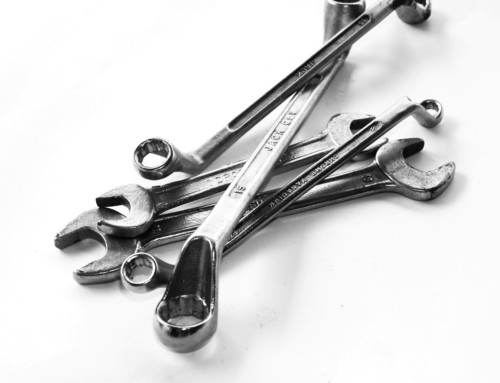The Importance of Understanding the Terms and Definitions of the Maintenance & Reliability Language
 Imagine being asked to discuss a breakdown during a production meeting. Only you are not aware of a breakdown, but production is claiming there was one and it could have been prevented by some Preventative Maintenance. You ask what equipment the breakdown was on and check the records. The records show there was a minor corrective action on the equipment last night, but not a breakdown.
Imagine being asked to discuss a breakdown during a production meeting. Only you are not aware of a breakdown, but production is claiming there was one and it could have been prevented by some Preventative Maintenance. You ask what equipment the breakdown was on and check the records. The records show there was a minor corrective action on the equipment last night, but not a breakdown.
After some discussion, the production manager explains that there was a leak, and the line had to be stopped to repair the leak. You know that a leak is not a breakdown, and will not impact production. The production manager saw a leak and assumed it was a breakdown. The end result was an unplanned outage lasting 30 minutes.
All this could have been avoided if there was a standard definition of a breakdown. To the production manager the breakdown was a leak, to the maintenance manager a breakdown is when it fails to pump.
This is a simple example, but this type of discussion happens every day, and it can all be avoided if everyone was talking the same language.
Why Everyone Needs to Be Speaking the Same Language
Speaking the same language will save time, resources and most importantly profits. Staff will not be sent to “Breakdowns” when they are not in fact breakdowns. This type of miscommunication doesn’t just occur between Maintenance and Production, but within the Maintenance department as well.
The goal of having everyone speak the same language is to ensure good communication. Good communication comes from understanding the definitions of the Maintenance & Reliability terms and the associated abbreviations. With an understanding of the terms in maintenance & reliability, reports, analysis and conversations can take place, without any room for interpretation. This ensures everyone is on the same page and sets the stage for a fully integrated operation where production and maintenance works together as one.
Common Example of Misunderstood Terminology
To help reinforce the need for common language, here are a few terms that are commonly misused in Maintenance;
- Condition Based Maintenance (CBM) vs Predictive Maintenance (PDM): CBM is the direction of maintenance activities based on indicators of equipment health, not time or cycles. PdM is an equipment strategy based on measuring the condition of the equipment to assess whether the equipment will fail in a given period of time, then acting to avoid the consequence of the failure.
- Preventative Maintenance (PM) vs Proactive Maintenance: Preventative Maintenance (PM) is the strategy of replaced, or restoring equipment at a fixed intervals regardless of its condition. Proactive Maintenance is the work that is completed to avoid failures or to identify defects that could lead to failures. It includes PM & PdM activities.
- Corrective Maintenance (CM) vs Breakdown Maintenance (BM): CM is maintenance activities initiated as a result of the observed or measured condition of an asset, before or after a functional failure to correct the problem. BM is maintenance activities that take place after an asset had experienced a functional failure.
- Reliability vs Availability: Reliability is the probability that equipment will perform the required functions satisfactory under specific conditions within a certain time period. Availability (in the reliability context) is the probability that an asset or system is operating satisfactory at any point time. Availability (in the context of OEE) is the percentage of time that an asset is actually operating compared to when it is scheduled to operate.
How to Get Everyone Speaking the Same Language
The problem with Maintenance & Reliability terminology is that it is specific and technical. Add hundreds of abbreviations and it can quickly become overwhelming to even the seasoned maintenance professional. To start the journey of getting everyone to speak the same language, a simple approach should be taken.
- Standardize the definitions and identify abbreviations for the maintenance & reliability terms used in the organization. This is essentially a dictionary for the site. This may take a long time and you may not have the resources to do so. A great solution may be to buy the Professionals Guide to Maintenance & Reliability Terminology by Ramesh Gulati, Jerry Kahn, and Robert Baldwin. This comprehensive guide has the definitions and abbreviations for all the terms used in industry. Start by purchasing one for each department.
- Once you have the dictionary created, take the top 20 or 30 most commonly misused terms and circulate a guide around the site. This could a simple 2-page document with the term, definition and abbreviation, along with an example of when to use and when not to use. This simple document will go a long way in getting everyone to speak the same language.
Does your site already speak the same maintenance & reliability language? What about your maintenance department? By taking a few small steps to align everyone, miscommunication will be reduced. This is the first step to creating a holistic approach to maintenance across the site.
Remember, to find success, you must first solve the problem, then achieve the implementation of the solution, and finally sustain winning results.
I’m James Kovacevic
Eruditio, LLC
Where Education Meets Application
Follow @EruditioLLC
References:
Professionals Guide to Maintenance & Reliability Terminology by Ramesh Gulati, Jerry Kahn, and Robert Baldwin[/fusion_builder_column][/fusion_builder_row][/fusion_builder_container]




